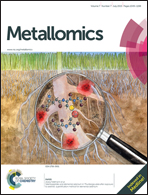Transactivation of the human retinoid X receptor by organotins: use of site-directed mutagenesis to identify critical amino acid residues for organotin-induced transactivation
Abstract
Organotins, such as tributyltin (TBT) and triphenyltin (TPT), may disrupt endocrine activity in mammals arising from their ability to act as ligands for the retinoid X receptor (RXR) and the peroxisome proliferator-activated receptor γ (PPARγ). The structure of TBT is completely different from that of 9-cis retinoic acid (9cRA), an endogenous RXR ligand; and X-ray crystallographic studies have revealed that TBT and 9cRA have distinct binding interactions with human RXRα. Therefore, organotins and rexinoids likely activate RXR by different mechanisms. Here, we used human RXRα mutants to investigate which amino acid residues of the receptor are critical for transactivation induced by rexinoids and organotins. We found that 9cRA and a synthetic RXR agonist (LG100268) failed to activate R316A and L326A RXRα mutants. In contrast, all the tested organotins activated the R316A mutant, the L326A mutant, or both but failed to activate a C432A mutant. These results suggest that the importance of L326, which is located in the β-strand, for rexinoid-induced transactivation of RXRα is comparable to that of R316; in contrast, C432 is critical for organotin-induced transactivation, whereas R316 and L326 are not required. We used a PPARγ/RXRα C432A heterodimer to determine whether TBT and TPT could activate the heterodimer by binding to PPARγ. We found that TBT and TPT activated the PPARγ/RXRα C432A heterodimer, which suggests that both compounds can activate the heterodimer through PPARγ. These findings indicate that the amino acid residues that are critical for organotin-induced transactivation of RXRα are distinct from those required for rexinoid-induced transactivation.


 Please wait while we load your content...
Please wait while we load your content...